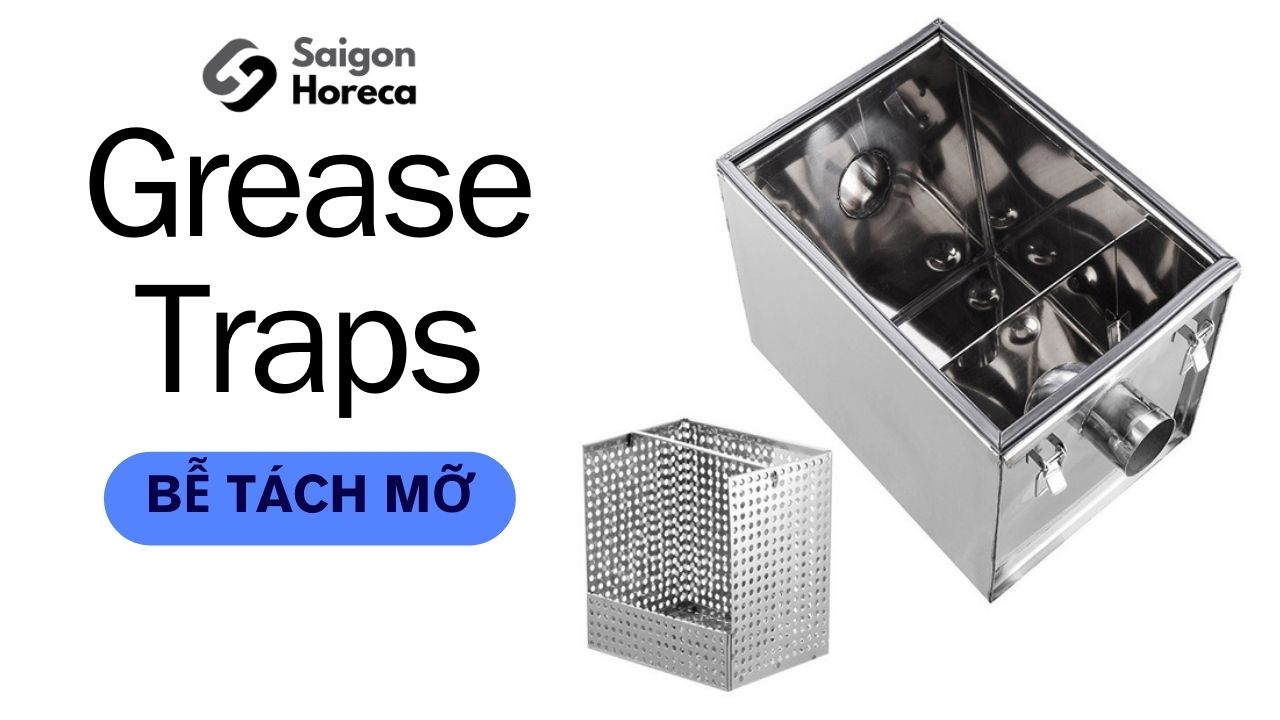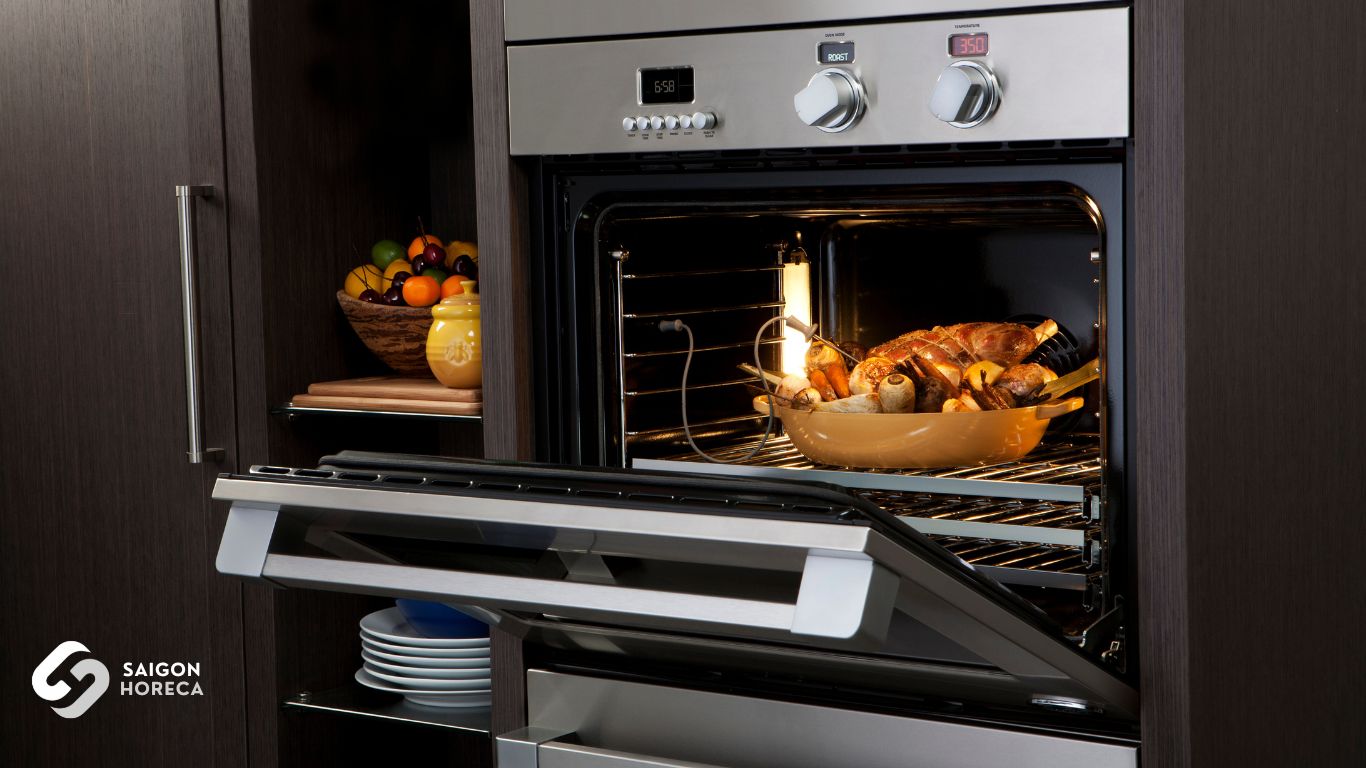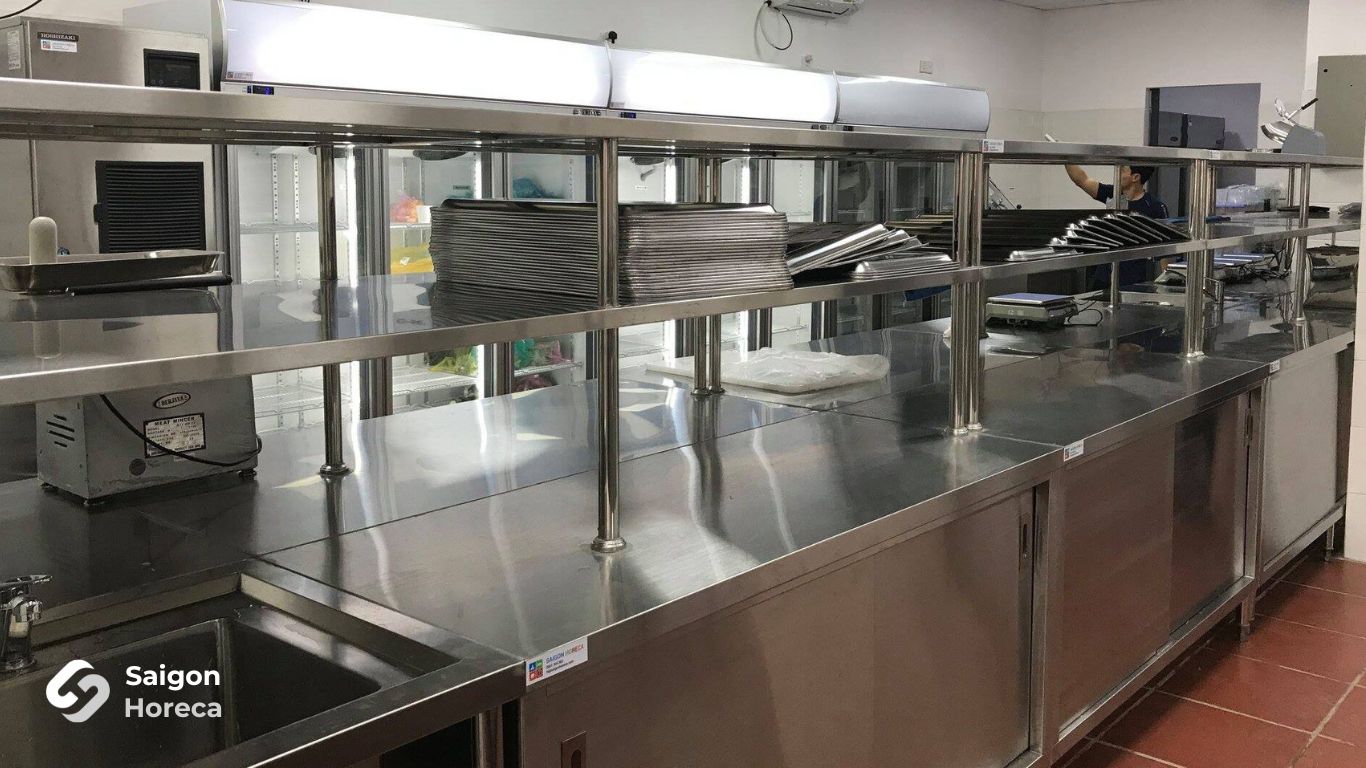Looking to elevate your grilled dishes with a Salamander Grill? With its ability to grill quickly and evenly while giving […]
Read More

- Industrial Kitchen Equipment, Inox Kitchen Equipment
Grease Traps in Industrial: The Crucial Role for Kitchen Areas
- December 6, 2023
Managing grease and waste in wastewater is a significant challenge, especially in the context of wastewater from industrial kitchen areas. This issue not only affects the clogging of drainage pipes but also poses serious problems for the efficiency and operation of the washing system in the kitchen area.
Proper wastewater treatment is becoming increasingly essential, and in this context, grease traps play a crucial role in eliminating grease and solid waste. In doing so, they not only address the clogging issue in the drainage system but also help maintain the efficiency and functionality of the washing system in industrial kitchen areas.
Through this article, we will explore the vital roles of grease traps, serving as an indispensable solution to effectively address issues related to grease and waste in the wastewater of industrial kitchen areas.
In this article
Introduction to Grease Traps
A grease trap, also known as a grease interceptor, is a device constructed from stainless steel designed to assist in filtering and separating grease and impurities from wastewater, aiming to protect drainage pipes. This equipment plays a crucial role in preventing drainage system blockages caused by the solidification of animal fats and organic waste.
All excess grease and waste from food processing or utensil cleaning in kitchen areas are retained by stainless steel grease traps before being collected and regularly cleaned.
In this way, a grease trap not only fulfills its primary role of preventing grease and waste but also ensures that the drainage environment operates efficiently. Furthermore, by capturing excess greasy food residues during the dishwashing process in kitchen washing areas, grease traps effectively optimize wastewater treatment processes, maintaining the safety and cleanliness of the drainage system.
Classification of Stainless Steel Grease Traps in Industrial Kitchens
Stainless steel grease traps are commonly employed in industrial kitchens and are primarily classified into two main types: localized grease traps and centralized grease traps installed beneath the kitchen floor.
Localized Grease Traps
Localized grease traps are appropriately sized to be placed directly under sinks, primarily used in food preparation areas or the dishwashing system of industrial kitchens. The design may involve a model for each sink corresponding to a grease trap, or a shared grease trap for multiple sinks. However, precise design and installation are crucial and require expertise; improper execution can reduce the effectiveness of grease separation. Localized grease traps are integrated under sinks in industrial kitchens, providing convenience and efficiency in preventing grease buildup.
Centralized Stainless Steel Grease Traps
Centralized grease traps, also known as in-floor grease traps, are designed with larger dimensions and are typically installed underground to save floor space. The placement of the grease trap should be carefully chosen for easy cleaning and waste collection. The entire wastewater flow from the industrial kitchen will drain into this trap, where grease is efficiently separated. Centralized grease traps not only help maintain the safety and cleanliness of the drainage system but also provide excellent performance in processing grease and waste from the kitchen.
Importance of Grease Traps in Industrial Kitchen Areas
A grease trap is not just a device; it’s a robust safeguard for the wastewater treatment system in industrial kitchens. This ensures safety and hygiene for the entire kitchen area while positively contributing to environmental protection.
Protecting Drainage Pipes
In industrial kitchens, operating at high capacities is unavoidable to meet the demands of serving a large number of customers. Therefore, using sinks in food preparation areas and dishwashing zones is common. However, if the drainage system of these areas gets clogged, it will significantly affect the kitchen’s operational efficiency and require substantial costs to rectify the plumbing issues.
Waste and excess grease not filtered will accumulate in the drainage pipes, creating conditions for blockages. By using grease traps, this waste is retained in the trap, ensuring smooth operation of drainage pipes. The waste collected in the grease trap can be easily removed at regular intervals.
Ensuring Hygiene in Food Preparation Areas
Not using grease traps can lead to the accumulation of waste in drainage pipes, creating conditions for the growth of harmful bacteria. These bacteria can spread to food, food containers, affecting hygiene. Decomposed waste also produces undesirable odors, not only impacting the air quality in the kitchen but also reducing operational efficiency.
Grease traps help prevent all these issues while maintaining the freshness of the air in the industrial kitchen. The tight cover of the grease trap prevents odors from waste from escaping, keeping the air always fresh.
Environmental Protection
Grease and waste from industrial kitchens can directly impact the environment if not treated through grease traps. These substances can be discharged directly into the environment, affecting water and soil, causing air pollution, and creating unpleasant odors. Areas with concentrated waste often attract insects and harmful organisms, creating favorable conditions for the growth of harmful bacteria, viruses, and toxic fungi, threatening the health of humans and livestock.
Therefore, using grease traps not only efficiently addresses the waste and grease treatment issue but also actively contributes to environmental protection. This way, waste is processed in a timely manner, preventing environmental pollution problems in and around the kitchen area, helping maintain the cleanliness of the air and water, and protecting the health and quality of life of the community surrounding the industrial kitchen area.


Saigon Horeca – Reliable and Quality Supplier
Grease traps in industrial kitchens not only effectively address wastewater treatment challenges but also bring significant financial benefits to investors. With the main goal of ensuring safety and hygiene in the kitchen, protecting the drainage system, and preventing environmental pollution, equipping grease traps for industrial kitchens becomes extremely necessary. To have a better understanding of the models, designs, and usage features, refer to detailed information about stainless steel grease traps at Saigon Horeca. This is a reliable source of information to gain more knowledge and find optimal solutions, meeting all practical requirements for usage and installation space in your kitchen.
Monday - Friday
from 8h00 to 18h00
Số 40 Đường số 6, KDC Melosa Khang Điền, Phú Hữu, HCM.
Contact anytime
In the context of the rapidly growing culinary and food service industry, investing in industrial kitchen equipment for a canteen […]
Read More




